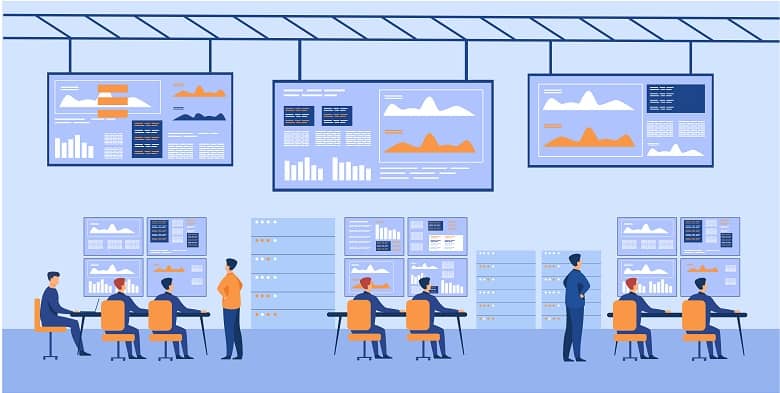Unpacking Supplemental Agreements: What You Need to Know Before Signing
In today’s fast-paced business environment, individuals and organizations must clearly understand the legal documents they sign. One such critical document is a supplemental agreement. In this article, we will explore the definition of supplemental agreements, the reasons why supplemental agreements exist, and the importance of understanding supplemental agreements before putting pen to paper.
What is a Supplemental Agreement?
A supplemental agreement is a legally binding document that modifies, amends, or supplements an existing contract or agreement between two or more parties. It is a separate document that sets forth additional terms, conditions, or stipulations not addressed in the original agreement or have arisen due to unforeseen circumstances or changes in the parties’ relationship.
How Does a Supplemental Agreement Work?
To be enforceable, a supplemental agreement must be clearly connected to the original contract and must not contradict its terms. In addition, the parties to the supplemental agreement must have the legal capacity to agree and be supported by consideration. Consideration is a legal concept referring to something of value, such as money, goods, or services, exchanged by the parties in return for the obligations outlined in the agreement.
Why Do Supplemental Agreements Exist
Addressing Unforeseen Circumstances
One of the main reasons supplemental agreements exist is to address unforeseen circumstances that may arise after the signing of the original contract. As businesses grow and evolve, so do their contractual needs. A supplemental agreement allows the parties to make necessary changes to their contractual relationship without renegotiating the original agreement.
Clarifying Ambiguities
Supplemental agreements can also be used to clarify ambiguities in the original contract. For example, in some cases, the language used in the original agreement may be unclear or open to interpretation, resulting in disputes or misunderstandings between the parties. By entering into a supplemental agreement, the parties can agree on a specific interpretation or amend the language to make the original contract clearer and more precise.
Adding or Removing Parties
Another common reason for supplemental agreements is to add or remove parties to the original contract. A supplemental agreement allows the parties to make changes without renegotiating the original contract.
Importance of Understanding Supplemental Agreements
Legal Consequences
It is crucial to understand supplemental agreements because they can have significant legal consequences for the parties involved. A supplemental agreement may modify the original contract’s terms and conditions, which could alter the parties’ rights and obligations. Failure to comply with the terms of a supplemental agreement can result in legal disputes, financial penalties, or even termination of the original contract.
Protecting Your Interests
Understanding supplemental agreements is also important for protecting your interests. Before signing any legal document, it is essential to understand its terms and conditions and how they may impact your rights and obligations. This is particularly true for supplemental agreements, which can modify the original contract in ways that may not be immediately apparent.
By thoroughly reviewing and understanding a supplemental agreement, you can ensure that you do not inadvertently agree to unfavorable terms or conditions that could negatively impact your business or personal interests.
Avoiding Disputes and Litigations
Another crucial aspect of understanding supplemental agreements is to avoid disputes and litigation that may arise due to misunderstandings or misinterpretations of the terms and conditions. Disputes over contractual obligations can be time-consuming, costly, and damaging to business relationships. By thoroughly understanding the supplemental agreement and its implications, the parties can minimize the risk of disputes and potentially avoid litigation.
Common Types of Supplemental Agreements
As we delve deeper into the world of supplemental agreements, it’s important to note that these documents can be used in various industries and situations. This section will explore some common types of supplemental agreements you may encounter in various contexts, including employment, lease, sales, and service agreements. Understanding these common types can help you recognize and navigate supplemental agreements in your personal or professional life.
Employment Contracts
Modifying Terms of Employment
Supplemental agreements are frequently used to amend or modify the terms of employment contracts. As a company grows or evolves, the roles and responsibilities of employees may change, necessitating updates to their original employment agreements. Supplemental agreements can be used to adjust an employee’s job title, compensation, benefits, or working hours, among other things, without renegotiating the entire contract.
Addressing Employee Transfers and Promotions
Employment-related supplemental agreements can also be utilized when an employee is transferred or promoted within a company. In such cases, the supplemental agreement may outline the new position’s responsibilities, reporting structure, and any changes to compensation or benefits. This ensures that both the employer and employee clearly understand the new role and its expectations.
Lease Agreements
Changing Lease Terms
In the world of real estate, supplemental agreements are often used to modify lease agreements. This can occur for various reasons, such as when a tenant requests permission to alter the property or when a landlord needs to update building policies or regulations. A supplemental agreement allows the parties to make these changes without renegotiating the entire lease, streamlining the process, and maintaining the integrity of the original contract.
Extending or Renewing Leases
Another common use of supplemental agreements in lease situations is to extend or renew the lease terms. When a lease term is nearing its end, the parties may wish to continue their landlord-tenant relationship. A supplemental agreement can be used to extend the lease’s duration, adjust rent or other terms, and update any provisions that may have become outdated since the original lease was signed.
Sales Contracts
Amending Purchase Details
In the context of sales contracts, supplemental agreements can be employed to amend the purchase details of goods or services. For instance, if a buyer needs to change the quantity, specifications, or delivery schedule of the goods being purchased, a supplemental agreement can be used to make these adjustments without renegotiating the entire sales contract.
Addressing Contingencies
Supplemental agreements can also help address contingencies that may arise during a sales contract. For example, suppose an unforeseen event impacts the buyer’s ability to complete the transaction. In that case, a supplemental agreement can be used to modify the terms of the contract, such as extending the closing date or adjusting the purchase price.
Service Agreements
Modifying Service Scope or Terms
Lastly, supplemental agreements are commonly used in conjunction with service agreements. As a business’s needs change, modifying the scope or terms of a service agreement with a provider may be necessary. A supplemental agreement can be used to adjust the services to be provided, the fees associated with those services, or the duration of the agreement, without renegotiating the entire contract.
Adding or Removing Parties
Supplemental agreements can also be employed in service agreements to add or remove parties involved in the contract. For example, if a company hires a new subcontractor to perform services under an existing agreement or if a service provider merges with another company, a supplemental agreement can be used to update the parties to the contract and ensure that all relevant parties are accurately reflected in the agreement.
Key Elements of Supplemental Agreements
As we continue our exploration of supplemental agreements, it is essential to understand the key elements that typically form part of these legal documents. In this section, we will discuss some of the critical components you may encounter in supplemental agreements, including notice requirements, governing law, interpretation, and provisions related to amendments and termination.
Notice Requirements
Importance of Clear Communication
One crucial aspect of a supplemental agreement is the notice requirements. These provisions outline the methods and timelines for providing notices, requests, or other communications between the parties related to the supplemental agreement. Clear communication is vital to ensure that both parties are aware of any changes or updates to the agreement and can respond accordingly.
Methods of Delivery
Notice requirements often specify the acceptable methods of delivery for communications, such as by mail, email, or personal delivery. It is essential to follow the stipulated methods to ensure that your communications are deemed legally valid and binding.
Governing Law
Applicable Jurisdiction
Another critical element of supplemental agreements is the governing law provision. This clause specifies the legal jurisdiction whose laws will be used to interpret and enforce the supplemental agreement. It is crucial to understand the governing law, as it can impact your rights and obligations under the agreement and affect how disputes are resolved.
Impact on Dispute Resolution
The governing law can also influence the dispute resolution process. For instance, it may determine the venue for any litigation, arbitration, or mediation related to the supplemental agreement. Familiarizing yourself with the governing law can help you better understand your rights and navigate any potential disputes that may arise.
Interpretation
Clarity and Consistency
The interpretation section of a supplemental agreement is essential for ensuring clarity and consistency between the original contract and the supplemental agreement. This provision usually outlines how the terms of the supplemental agreement should be interpreted in relation to the original contract, ensuring that the two documents are read together harmoniously.
Resolving Ambiguities
The interpretation section may also guide on resolving ambiguities in the language of the supplemental agreement. This can help the parties avoid disputes or misunderstandings arising due to unclear or conflicting provisions in the agreement.
Amendments and Termination
Modifying the Supplemental Agreement
Supplemental agreements often include provisions related to amendments. These clauses outline the process for making changes to the supplemental agreement, such as the need for written consent from both parties or the requirement to execute another supplemental agreement to effectuate the amendments. Understanding the amendment process is crucial to ensure that any future modifications to the supplemental agreement are legally valid and enforceable.
Terminating the Supplemental Agreement
Lastly, supplemental agreements may include provisions related to termination. These clauses specify the conditions under which the supplemental agreement may be terminated, such as specific events, the passage of a certain amount of time, or the parties’ mutual agreement. Knowing the termination provisions can help you plan for potential changes in your contractual relationship and ensure you are prepared for future developments.
Considerations Before Signing Supplemental Agreements
As we approach the conclusion of our comprehensive guide on supplemental agreements, it’s essential to discuss some important considerations before signing these legal documents. In this section, we will outline several crucial factors to remember when entering into a supplemental agreement, such as reviewing the agreement, seeking professional advice, negotiating the agreement, and ensuring compliance with all relevant laws and regulations.
Reviewing the Agreement
Thorough Examination
Before signing a supplemental agreement, it is crucial to examine the document thoroughly. Carefully read through the entire agreement to ensure that you fully understand the terms, conditions, and obligations that it imposes. In addition, look for any inconsistencies or discrepancies between the original contract and the supplemental agreement, as these could lead to potential disputes or misunderstandings in the future.
Comparing with the Original Contract
It’s also vital to compare the supplemental agreement with the original contract to ensure the two documents are aligned and consistent. Make sure that the supplemental agreement does not contradict or conflict with any provisions of the original contract, as this could lead to legal disputes or complications down the line.
Seeking Professional Advice
Consulting an Attorney
Given the legal complexities and potential ramifications of entering into a supplemental agreement, it is often wise to consult an attorney before signing the document. A legal professional can help you understand the supplemental agreement’s implications, identify potential issues, and suggest possible revisions or modifications to protect your interests.
Obtaining Financial or Industry Expertise
In some cases, it may also be beneficial to seek the advice of a financial or industry expert. These professionals can help you evaluate the commercial aspects of the supplemental agreement and assess the potential impact on your business or personal finances.
Negotiating the Agreement
Identifying Key Terms
Before signing a supplemental agreement, it is essential to identify the key terms that are most important to you or your business. This can help you focus your negotiations on the issues that matter most and ensure that the final agreement reflects your priorities and objectives.
Engaging in Effective Negotiation
Once you have identified the key terms, negotiate effectively with the other party to reach a mutually satisfactory agreement. This may involve making compromises, suggesting alternative solutions, or offering concessions to achieve a fair and balanced outcome.
Ensuring Compliance
Compliance with Laws and Regulations
Lastly, ensuring that your supplemental agreement complies with all applicable laws and regulations is critical. This may involve reviewing the document in light of relevant legislation, industry standards, or professional guidelines. Failure to comply with these requirements could result in legal penalties, fines, or other negative consequences for you or your business.
Adhering to Internal Policies and Procedures
In addition to legal compliance, it’s also important to ensure that your supplemental agreement adheres to any internal policies and procedures within your organization. This may involve obtaining necessary approvals or authorizations, following established processes, or ensuring that the supplemental agreement aligns with your company’s values and strategic objectives.
Conclusion
As we conclude our in-depth exploration of supplemental agreements, we must recap the key points and takeaways from our discussion. In this closing section, we will briefly summarize the central aspects of supplemental agreements, underscore the importance of thoroughly reviewing these documents, and offer some final thoughts on this crucial topic.
Recap of Supplemental Agreements
Throughout our comprehensive guide, we have covered the definition of supplemental agreements, their existence as a means to modify or clarify existing contracts, and the importance of understanding these legal documents. We have also delved into common types of supplemental agreements, such as employment contracts, lease agreements, sales contracts, and service agreements. Additionally, we have examined the key elements typically found in these agreements, including notice requirements, governing law, interpretation, and provisions related to amendments and termination.
Importance of Thoroughly Reviewing Supplemental Agreements
We have also emphasized the need to thoroughly review supplemental agreements before signing them. This includes comparing the supplemental agreement with the original contract, seeking professional advice from legal experts or industry professionals, negotiating the agreement to ensure that it reflects your priorities and objectives, and ensuring compliance with all relevant laws, regulations, and internal policies.
Final Thoughts
In conclusion, supplemental agreements play a critical role in the world of contracts, offering parties the flexibility to modify, clarify, or extend their original agreements. As such, it is essential to approach these documents with the utmost care and diligence. By thoroughly reviewing supplemental agreements, seeking professional guidance, negotiating terms that align with your interests, and ensuring legal and regulatory compliance, you can successfully navigate the complexities of these legal instruments and protect your interests in contractual relationships.





